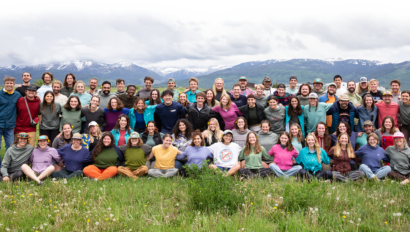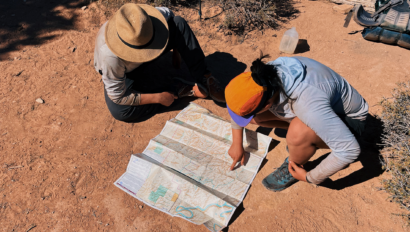
It’s amazing to think that something as simple as the bicycle took humanity so long to invent. Like many of history’s great, scaled adoptions (e.g. cellular phones, the industrial revolution, potato farming), a large change needed to occur to create the technical achievement of the bicycle. That monumental event was one, really-bad German summer. The year 1816 was such a rainy, miserable summer across Germany that many crops, without sunlight, didn’t grow. The resulting famine forced many people to kill-off their horses since the price of oats was skyrocketing (comparable with today’s oil prices). Without basic transportation, there was suddenly a market for an alternative.
Enter the industrious German aristocrat Baron Karl von Drais de Sauerbronn, who had the idea of mounting two wooden carriage wheels inline on either end of a wooden bench. Until this point, everyone imagined you would fall over without something to support the contraption, so idea of two, inline wheels as a basic construct was completely original. Hence the concept for the modern bicycle was born. Drais’ contraption was known as the laufmachine – literally “running machine” – as there was no drive train, and the user propelled the invention by scooting or paddling with your feet along the grown.
The laufmachine fell into obscurity after the sun came back and the resulting commodities price-drop enabled people to stop shooting their horses. But, since the technology existed to create the laufmachine for some 3,500 years before its invention, if it wasn’t for Drias seizing on a market opportunity, we might still not have anything like the modern bicycle (and the consequenting automobiles that followed). Funny enough, laufmachines are having a resurgence as a child’s toy.
In 1860’s Paris, someone had the idea of attaching pedals to the front wheel of a laufmachine, and the “velocipede” (what we think of as the old-timey bicycle) was born. Since the “drive train” attached to the front wheel (where you steer from) velocipedes were notoriously hard to control, but they were immensely popular. There was a huge market for riding schools, where adults would sign up for courses to learn how to ride the contraption. Of his own learning experience with a private instructor, Mark Twain wrote, “Get a bicycle. You will not regret it, if you live.”
In 1885 the “safety bicycle” (our version of the modern bicycle) was invented. With a chain drive train where the power came from the rear wheel and the steering came from the front wheel, the world had a human-powered transportation device that was safe, manageable and fun. Almost instantly, people began riding their safety bicycles great distances. Famous multi-stage races like the Tour de France were born from this age of fixed, single-gear propulsion. Much of the modern roads and infrastructure that developed in the UK and the US were built around the the bicycle. And most of the world’s early auto mechanics were adaptable bike mechanics.
Bicycle touring remains one of the best ways to see the world. WV students can experience the magic of bicycle touring on the 28-day Pacific Coast Bike Adventure from Portland, Oregon to San Francisco, California and on the 14-day Cape Cod Bike Adventure circling a coastline loop along Nantucket, Martha’s Vineyard and Cape Cod. Both of these great bicycle touring trips are accessible to beginners – offering an inspiring introduction to life on two wheels.

